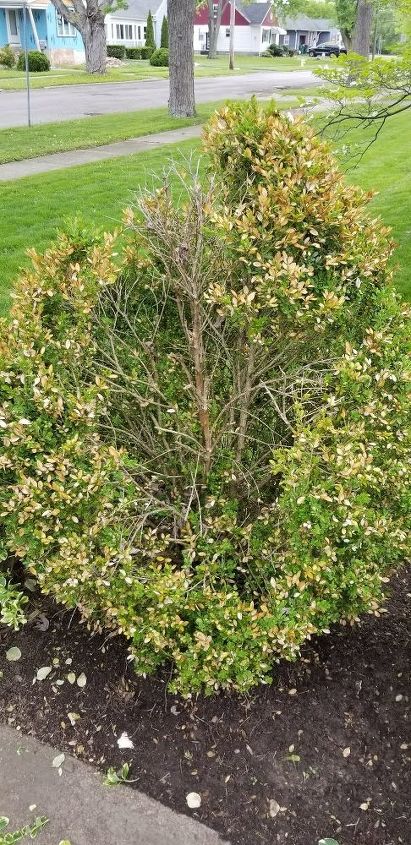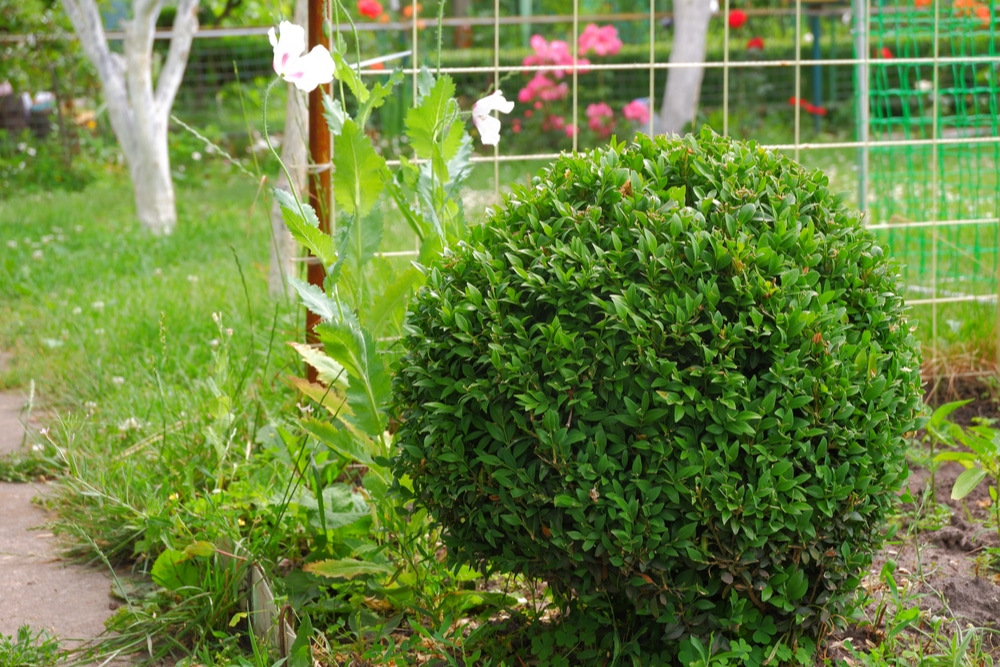Reviving boxwood bushes involves proper watering, pruning, and fertilizing to promote new growth. Neglected or damaged bushes can be rejuvenated by following these steps.
Boxwood bushes are popular for their evergreen foliage and compact growth habit. However, they can become dull, overgrown, or diseased if not properly cared for. If your boxwood bushes are looking lackluster and in need of a revival, don’t worry.
With some simple steps, you can bring back their beauty and health. This article will guide you on how to revive your boxwood bushes effectively. By watering them correctly, pruning them at the right time, and providing proper nutrition, you can help your boxwood bushes thrive once again. So, let’s get started on reviving your boxwood bushes and enjoying their lush green beauty in your garden.

Credit: www.hometalk.com
How to Revive Boxwood Bushes: Step by Step Guide
Understanding Boxwood Bushes
Boxwood bushes are popular in gardens due to their evergreen foliage and dense growth. These bushes are known for their small, compact leaves and slow growth rate. Boxwood bushes are versatile, as they can be used for hedges, topiaries, or ornamental shrubs.
However, it is important to understand the characteristics of boxwood bushes to ensure their proper care. They prefer well-draining soil and partial shade, and they are susceptible to common issues like boxwood blight, leafminers, and root rot. To revive boxwood bushes, it is crucial to identify these problems early on and take appropriate measures.
Regular pruning, proper watering, and applying organic fertilizers can help in maintaining the health and vitality of boxwood bushes. With proper care, these versatile evergreens can revive and thrive in your garden.
Diagnosing The Cause Of Boxwood Deterioration
Diagnosing the cause of boxwood deterioration begins with examining common signs of decline. These signs can include yellowing leaves, thinning foliage, and overall weakness. Identifying potential pests or diseases is crucial in determining the appropriate treatment. Look for evidence of boxwood leafminer, boxwood blight, or mites.
Assessing soil and environmental factors is also important. Check for proper drainage, ph levels, and sunlight exposure. Soil compaction, nutrient deficiencies, and extreme temperatures may contribute to boxwood problems. By carefully examining these factors, you can revive your boxwood bushes and restore their health.
Remember to address the specific causes and implement the necessary actions to ensure long-term success for your plants.
Implementing Effective Strategies For Reviving Boxwood Bushes
Implement effective pruning techniques to promote growth in your boxwood bushes. Correct any watering and drainage issues that may be affecting their health. Address nutrient deficiencies by providing the necessary fertilizers and supplements. Take necessary steps to combat pests and diseases that can harm your boxwood bushes.
These strategies will help revive your boxwood bushes and restore their vitality. Remember to regularly monitor their progress and make any adjustments as needed. With proper care and attention, your boxwood bushes will flourish and enhance the beauty of your garden.
So, follow these guidelines to revive your boxwood bushes and enjoy their lush green foliage for years to come.
Boxwood Restoration Plan
Reviving boxwood bushes requires careful preparation, implementing proper pruning methods, optimizing soil conditions and fertilization, and meticulous watering and check-ups. To start, remove any dead or damaged branches and trim back overgrown areas. Next, assess the soil ph and nutrients, making necessary amendments for optimal growth.
Regularly fertilize the bushes with a balanced, slow-release formula to provide essential nutrients. Water the boxwood bushes thoroughly, aiming for moist but not waterlogged soil. Regularly inspect the plants for signs of pests or diseases and take immediate action to address any issues.
By following these steps and keeping a watchful eye on their health, your boxwood bushes will flourish and regain their vitality.
Maintaining Healthy Boxwood Bushes
Maintaining healthy boxwood bushes involves recognizing signs of future decline and protecting them from common threats. By implementing preventive measures, you can promote ongoing care and maintenance. Boxwoods are prone to issues such as leaf browning, yellowing, and fungal diseases.
Regularly inspect the foliage for any signs of damage or discoloration. To protect against common threats like pests, keep the area around the bushes clean and free from debris. It’s also important to provide adequate sunlight, proper watering, and well-draining soil.
Prune the bushes regularly to promote airflow and prevent overcrowding. Applying organic fertilizers can help boost their resilience. By following these tips, you can revive your boxwood bushes and keep them healthy and thriving for years to come.
Boxwood Varieties And Their Specific Needs
Boxwood varieties offer diverse characteristics and specific needs that must be understood. By exploring popular cultivars, you can identify their individual preferences. This knowledge allows you to tailor your care and revival techniques accordingly, ensuring the best results for your boxwood bushes.

Each cultivar has unique characteristics that influence its growth and health, making it important to provide the appropriate care. Understanding their specific needs will enable you to provide the necessary conditions for their revival. By focusing on their distinct requirements, you can ensure the successful rejuvenation of your boxwood bushes.
So, take the time to learn about the different boxwood varieties and their specific needs to revive these beautiful plants effectively.
Frequently Asked Questions About Boxwood Bushes
Boxwood bushes require specific planting conditions to thrive. Provide well-draining soil and partial shade. Pruning should be done annually to maintain shape and promote healthy growth. Common pests like aphids and diseases including boxwood blight can affect these bushes. Regular inspection and timely treatment are essential.
Yes, boxwood can be successfully grown in containers, but proper care and regular watering are necessary. Recovery time from decline varies, depending on the severity. With proper care and conditions, boxwood can bounce back. So, it’s important to be patient and provide the necessary attention for revival.
Keep these guidelines in mind to optimize the health and beauty of your boxwood bushes.
Frequently Asked Questions Of How To Revive Boxwood Bushes
How Do You Revive Boxwood Bushes?
Reviving boxwood bushes involves trimming away dead branches and providing the right amount of water and fertilization. Make sure to remove any diseased foliage and treat any pest infestations. It’s also important to ensure proper drainage and avoid overwatering. Regularly monitor the boxwood bushes for signs of stress and address any issues promptly.
What Are The Common Causes Of Boxwood Decline?
Boxwood decline can be caused by various factors, including fungal diseases like boxwood blight or root rot. Poor soil drainage, overwatering, lack of sunlight, and improper pruning can also lead to decline. Additionally, boxwood plants are susceptible to pest infestations like boxwood leafminer and mites.
Identifying and addressing these issues promptly can help revive boxwood bushes.
How Often Should Boxwood Bushes Be Watered?
Boxwood bushes should be watered deeply once a week, ensuring that the soil is evenly moist but not waterlogged. Avoid overwatering, as this can lead to root rot and other fungal diseases. Checking the moisture level of the soil regularly and adjusting watering frequency based on weather conditions and individual plant needs is important for the health of boxwood bushes.
When Is The Best Time To Trim Boxwood Bushes?
The best time to trim boxwood bushes is in late winter or early spring, before new growth appears. This allows the plants to recover and promote healthy growth during the growing season. Avoid trimming boxwood bushes during the fall, as it may interfere with their ability to harden off before winter, making them more susceptible to cold damage.
Can Boxwood Bushes Be Saved If They Turn Brown?
Boxwood bushes can potentially be saved if they turn brown, depending on the cause of the browning. Evaluate the plant for signs of disease, pests, or environmental stress. Prune away dead and diseased branches, improve soil drainage, and ensure proper watering and fertilizer application.
If the plant doesn’t show signs of recovery within a reasonable period, it may be necessary to replace it.
Conclusion
To ensure the revitalization of your boxwood bushes, follow these simple steps: identify the problem, provide proper nutrition, prune regularly, and protect from pests. By closely observing the state of your bushes, you can easily pinpoint any issues that may be inhibiting their growth.
Remember to offer adequate fertilizer and water, giving young and stressed plants extra attention. Regularly trimming the branches will promote healthier growth, ensuring your bushes maintain their desired shape. Lastly, implementing pest control measures, such as using organic pesticides, will ward off any unwanted guests that may be causing damage.
With a little patience and consistent care, you can revive your boxwood bushes and enjoy their lush, green beauty for years to come.

